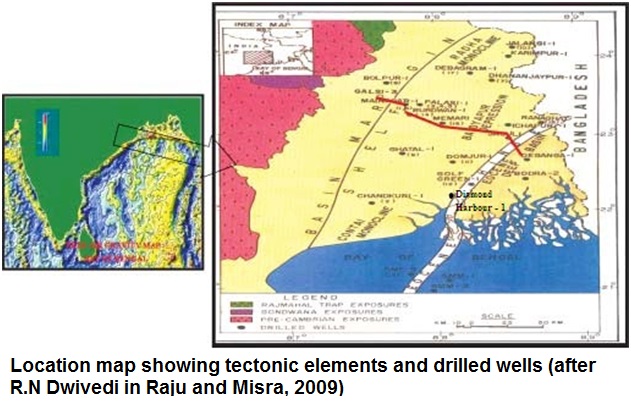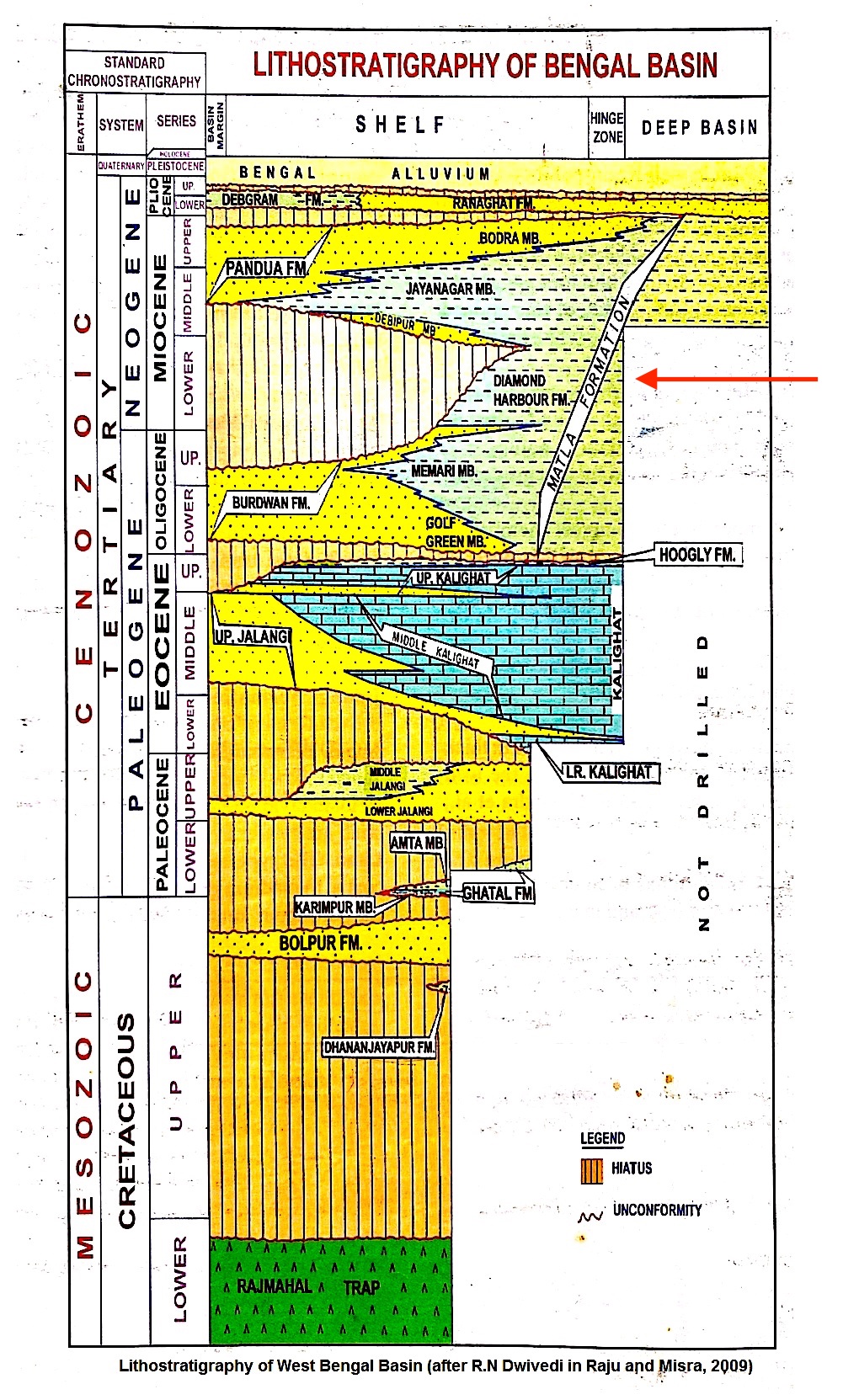Diamond Harbour Fm
Type Locality and Naming
Type section is in the well Diamond Harbour-1, Interval is 3905-4405 m and thickness is 500 m. [Original Publication: Madan Mohan et al., (1981) Biostratigraphy of the Tertiary succession met in well Diamond Harbour – 1 and its contribution to the Paleoecology and Geological History of Bengal Basin, Unpublished ONGC report.]
[Figure 1: Location map showing tectonic elements and drilled wells (after R.N Dwivedi in Raju and Misra, 2009)]
Lithology and Thickness
Siltstone. In the type section, the formation comprises of grey to dark grey siltstones, thin layers of very fine grained or silty sandstones and shale. Upper part contains grey coaly shales and coal. Silty nature of the Diamond Harbour Formation is observed only in the type section; in other wells it is represented largely by a shale. Its thickness is 500 m in the type section.
[Figure 1: West Bengal Basin lithostratigraphy (after R.N. Dwivedi in Raju and Misra, 2009) with red-arrow showing position of this formation]
Relationships and Distribution
Lower contact
Lower boundary is conformable with the Burdwan Fm.
Upper contact
Upper boundary is unconformable with the overlying the Pandua Fm.
Regional extent
The formation is restricted to the wells close to the hinge zone and is identified in the eastern part of Baidyapur Depression. (Deshpande et al., 1991); and in NW Bangladesh (on Precambrian platform region) if using USGS-Petrobangla chart
GeoJSON
Fossils
The formation contains arenaceous foraminiferal assemblage of Trochammina, Haplophragmoides, Reuselola along with Ammonia and Bulimina.
Age
Depositional setting
The Diamond Harbour Formation is inferred to have been deposited under shallow marine and coastal environment.
Additional Information

